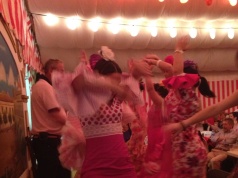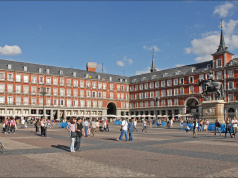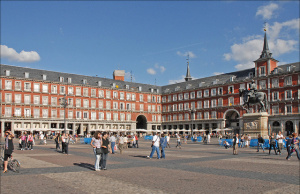In every corner of Spain you can find delicious little snacks, typically to accompany your drink.
Sometimes they are referred to as pintxos (or pinchos) and sometimes as tapas. So is it a tapa or pintxo you ask? Well, follow me on this little journey through culinary history…
During my recent visit to Alicante, we happened upon a popular Spanish restaurant chain Lizarran, which offers both tapas and pintxos. This was the first time I had been to this place, and it was a really cool experience. The cold snacks, such as tortilla de patata, were self-serve. With the ring of the bell from the chef, waiters came around to each table with trays of delicious hot snacks to choose as you wish. Each snack either had a large or small toothpick and at the end your bill was tallied depending on the number of sticks on your plate. That got me to thinking, what distinguishes a tapa from a pintxo?
Are pintxos cold and tapas hot?
This may be the easiest one to answer, with a big fat nope. Both pintxos and tapas come cold or hot, savory or sweet, vegetarian or with the most delicious jamón (Spanish ham). Essentially, the actual ingredients do nothing to distinguish a tapa from a pintxo.
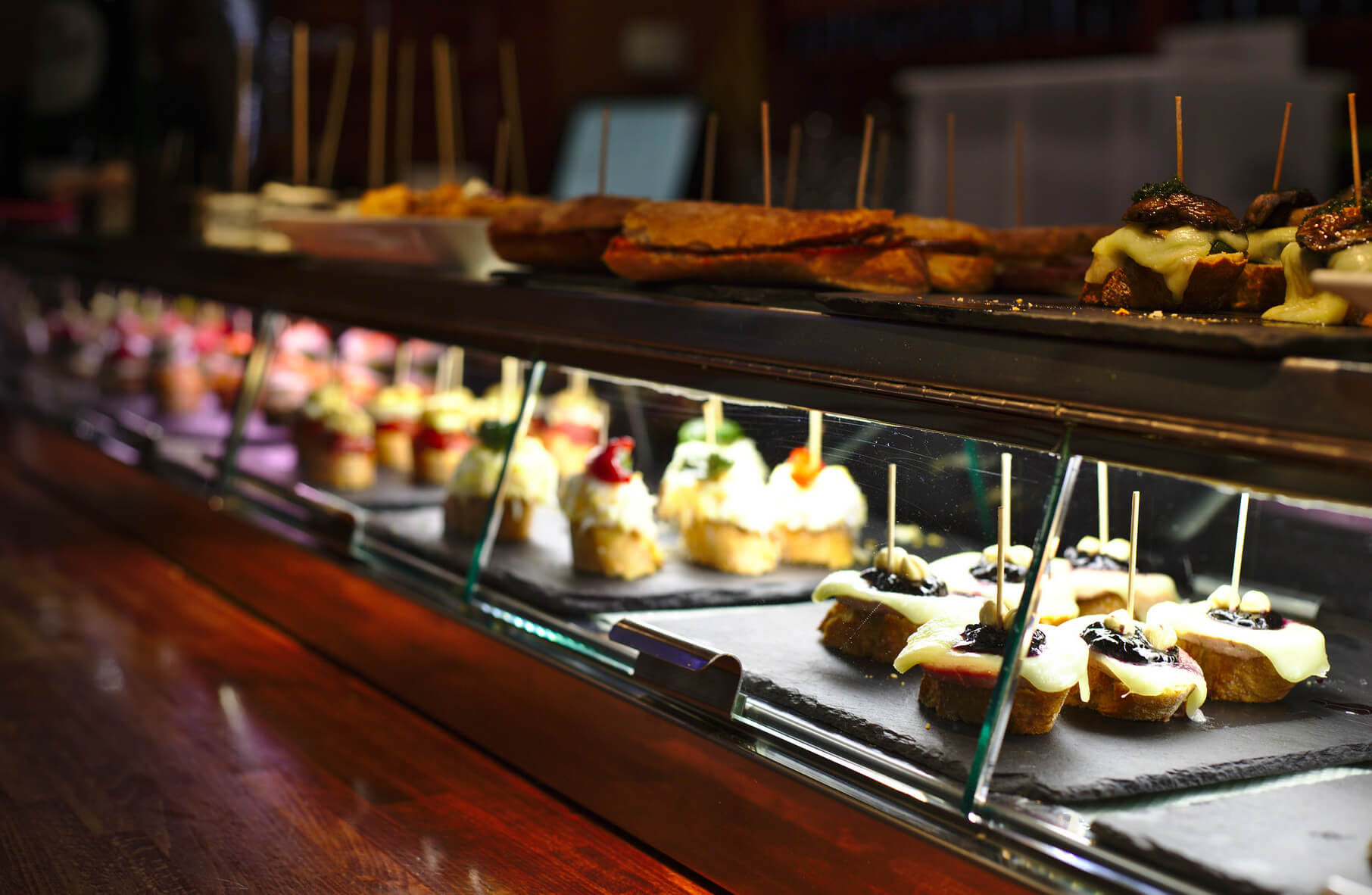
How about where they originated? Does that help?
Traditionally, the word “pintxo” comes from the Basque version of the Spanish word “pincho”, coming from the verb “pinchar”, which means to pierce, puncture, prick, stick, etc. Therefore, it makes sense that a pintxo is typically a small piece of bread that is pierced with a small stick to keep the ingredients in tact.
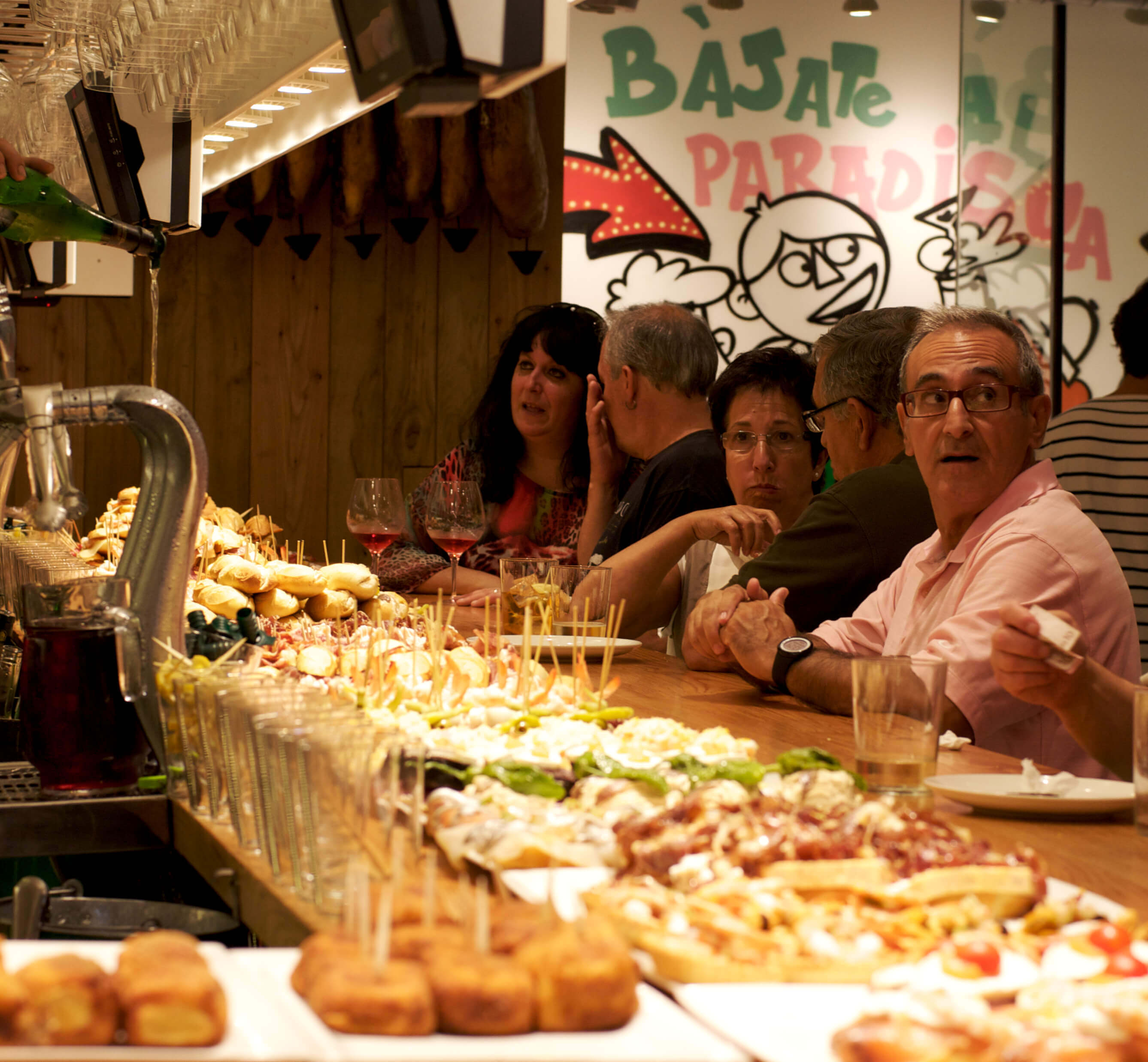
Tapas, on the other hand, come from the Spanish verb “tapar”, which means to cover. There are a variety of possible explanations to their emergence. One xample is the thirteenth century Castilian King Alfonso X had some sort of illness, which didn’t allow him to drink wine without eating something. Therefore, he passed a law that if alcohol was served at a tavern it must be accompanied by food.
Other explanations simply say that in old Andalusian taverns fruit flies were such a menace that the guests would use the small plate of food to cover their sherry in between sips, which would explain the use of the verb “to cover”.
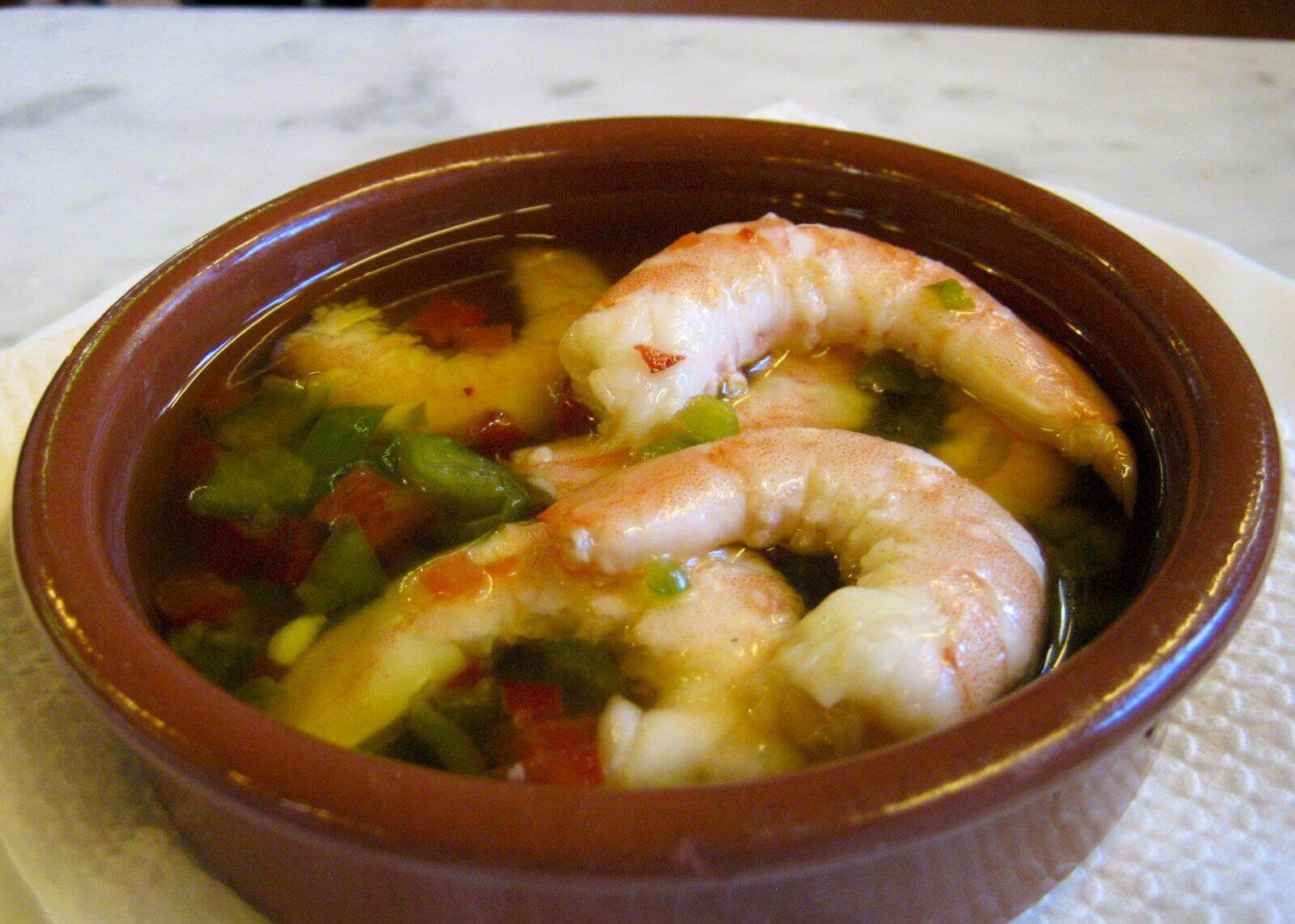
The definition of a tapa versus pintxo varies depending on which region of Spain you are in. In the Basque country today, for example, something that would be referred to as a Tapa in Andalusia, is always referred to as a pintxo, even if it doesn’t have bread or a stick.
What about if they are free?
The cost also does nothing to separate a pintxo from a tapa, instead it will again probably just be a good indicator of which region of Spain you are in. For example, in Andalusia, especially Granada, you will always get some sort of snack with your drink for free. They are typically referred to as tapas, and some places offer a more extravagant version than others. Oh, and they usually get better the more drinks you get.
If you are in a larger city such as Barcelona or Madrid (with the exception of El Tigre and a few others places), it would be really hard to find free tapas or pintxos, instead they will be self-serve or you have to order them directly.
So, in conclusion have we gotten any closer to a definition of tapa versus pintxo? Well, probably not, but rest easy that no matter what it’s called, it’s probably delicious!
Source: Gourmet and Breaks


